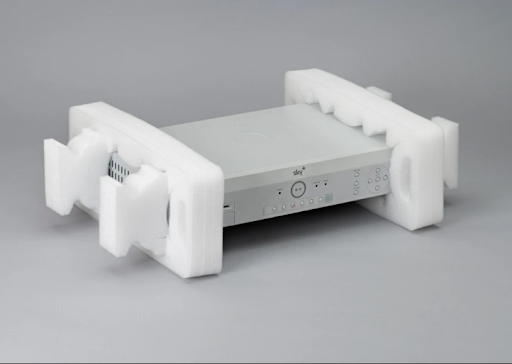unclearaqua.site
Introduction
unclearaqua.site Maintaining a crystal clear aquarium is not just about aesthetics; it’s essential for the health and well-being of your aquatic pets. Cloudy water can signify underlying issues that may affect your fish and plants, making it crucial to understand and address these problems. At UnclearAqua, we are dedicated to helping you achieve and maintain clear aquarium water. This comprehensive guide will walk you through the causes of cloudy water, prevention techniques, troubleshooting methods, and advanced maintenance strategies to ensure your aquarium remains a beautiful and healthy environment for your aquatic life.
1. Understanding the Causes of Cloudy Aquarium Water
unclearaqua.site
Biological causes of cloudy water are often related to the life cycles and behaviors of the organisms within your tank. One common issue is bacterial bloom, which occurs when there is a sudden increase in the bacterial population. This can happen when new fish are introduced, or the tank is overfed. Overfeeding leads to an excess of fish waste and uneaten food, which decomposes and fosters bacterial growth. Additionally, decaying plant matter contributes to cloudiness as it breaks down and releases organic compounds into the water.
1.2. Chemical Causes
Chemical imbalances in your aquarium can also lead to cloudy water. An unbalanced pH level can cause stress to fish and plants, leading to increased waste and organic debris. Hard water, which contains high levels of minerals like calcium and magnesium, can leave behind deposits that cloud the water. Improper use of aquarium additives, such as water conditioners or fertilizers, can introduce unwanted chemicals that disrupt the water clarity.
1.3. Mechanical Causes
Mechanical issues often stem from inadequate filtration and poor water circulation. A filter that is too small for the tank or clogged with debris cannot effectively remove particulate matter from the water. Similarly, poor water circulation allows debris to settle, creating cloudy patches. Accumulated debris from overstocking or insufficient cleaning also contributes to mechanical cloudiness.
2. Prevention Techniques for Clear Aquarium Water
2.1. Proper Tank Setup
Preventing cloudy water starts with setting up your tank correctly. Choose the right tank size for your fish and plants, ensuring there’s enough space for proper filtration and water movement. unclearaqua.site Select appropriate substrates and decorations that do not easily break down or leach into the water. Installing an effective filtration system is crucial; a good filter should handle at least four times the volume of your tank per hour.
2.2. Regular Maintenance Practices
Routine maintenance is key to preventing water clarity issues. Schedule regular water changes—typically 10-20% of the tank volume weekly—to remove excess nutrients and debris. Clean filters and other equipment according to manufacturer recommendations to ensure they operate efficiently. Regularly test and adjust water parameters, such as pH, ammonia, nitrite, and nitrate levels, to maintain a stable environment.
2.3. Feeding and Stocking Strategies
Feeding and stocking strategies play a significant role in maintaining clear water. Provide a balanced diet for your fish, avoiding overfeeding which can lead to waste buildup. Ensure your tank is not overstocked; too many fish produce more waste than the filtration system can handle. unclearaqua.site Introducing beneficial bacteria through products or using substrates and decorations that promote bacterial growth helps maintain water clarity by breaking down organic matter.
3. Troubleshooting Cloudy Water Issues
3.1. Identifying the Problem
When faced with cloudy water, the first step is to identify the cause. Observe the color and clarity of the water—white or milky water often indicates bacterial bloom, while green water suggests an algae problem. Test the water quality for pH, ammonia, nitrite, and nitrate levels to pinpoint chemical imbalances. Additionally, check for symptoms in fish and plants that may indicate stress or disease related to water quality.
3.2. Immediate Actions to Take
Once you have identified the problem, take immediate action to address it. Perform partial water changes to dilute pollutants and improve clarity. unclearaqua.site Use water clarifiers as a temporary solution to bind and remove suspended particles. Adjust feeding routines to prevent overfeeding and reduce waste production.
3.3. Long-Term Solutions
For long-term water clarity, consider upgrading your filtration system to one that is more efficient or better suited to your tank size. Adding live plants can help absorb excess nutrients and improve water quality. Implementing UV sterilizers can effectively control bacterial and algal blooms, ensuring clearer water over time.
4. Advanced Techniques for Maintaining Clear Water
4.1. Advanced Filtration Methods
Advanced filtration methods provide superior water clarity. Canister filters, which offer extensive mechanical, chemical, and biological filtration, are excellent for larger tanks. Sump systems provide additional water volume and space for various filtration media, enhancing overall water quality. Protein skimmers, typically used in marine tanks, remove organic compounds before they break down, maintaining clearer water.
4.2. Natural Clarification Methods
Natural methods can also help maintain clear water. Integrating aquaponics, where plants grow in the tank or a connected system, naturally filters the water. Controlling algae with snails and shrimp helps keep the tank clean. Utilizing bio-media in your filter encourages the growth of beneficial bacteria that break down waste products.
4.3. Chemical Treatments and Their Usage
Chemical treatments can be effective but should be used cautiously. Water clarifiers can quickly clear cloudy water, but it’s essential to address the root cause to prevent recurrence. Water conditioners neutralize harmful chemicals, making tap water safe for fish. Activated carbon in your filter can absorb impurities and improve water clarity, but it needs regular replacement to remain effective.
Conclusion
Achieving and maintaining crystal clear aquarium water is an ongoing process that involves understanding the causes of cloudiness, implementing preventive measures, troubleshooting issues, and utilizing advanced techniques. By following the guidelines provided in this comprehensive guide, you can create a healthy and visually appealing environment for your aquatic pets. Remember, consistency in maintenance and monitoring is key to sustaining water clarity.









Post Comment